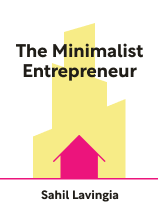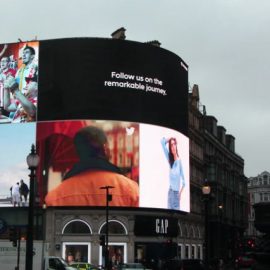

This article is an excerpt from the Shortform book guide to "The Minimalist Entrepreneur" by Sahil Lavingia. Shortform has the world's best summaries and analyses of books you should be reading.
Like this article? Sign up for a free trial here.
What is the funnel marketing strategy? How is it effective in starting a business?
The funnel marketing strategy is a roadmap that helps prospects become paying customers. Sahil Lavingia goes into more detail in his book The Minimalist Entrepreneur.
Keep reading to learn more about the funnel marketing strategy.
Set Up Your Funnel
In Lavingia’s model, the funnel is made up of social media at the top and email in the middle, which will funnel your sales to you at the bottom.
The “funnel marketing strategy” is a widely used concept in the business world. It refers to the pathway by which potential customers go from their first awareness of your brand to becoming paying customers. There are a number of variations on the funnel, but it generally works like this:
- The customer finds out your product exists, for example through an ad, social media, or word of mouth. This is the widest end of the funnel, reaching the largest number of people.
- Some portion of those people shows interest in what you have to offer. They might “like” your social media post, or follow your page, for example.
- Some of those will engage further and decide they want your product. They may visit your website or sign up for your email list.
- At the smallest end of the funnel, some people will buy your product.
Lavingia recommends setting up your funnel as follows:
Top of the funnel: social media
Your social media presence will be your farthest-reaching marketing vehicle. Here you’ll want to create content that will be interesting and engaging enough to generate followers. Some advice Lavingia offers for managing your social media content includes:
- Create accounts for your business and yourself separately. If people are attracted to your business, they may want to follow you personally. This way you create “fans” rather than just “customers.” (Shortform note: Forbes says turning your customers into “fans” means creating brand loyalty. When someone is a fan of a brand, they’re explicitly not a fan of competing brands. And the thing that turns customers into fans is excellent customer experience. So your customer service can be just as important as your product itself.)
- Post on your social media accounts every day.
- Share your pages in the communities your existing customers are part of.
- Generate content people can like, comment on, and share. Twitter’s retweet feature can generate a lot of exposure if someone with a big following retweets your post.
- Instagram, YouTube, TikTok, and Pinterest may work better for certain kinds of products. You have to find which sites work best for your business.
- Share content that has value, not minutiae like your meals. Post your thoughts and ideas, educational, inspirational, and entertaining content. Be personable and authentic.
- Share your business journey. People enjoy following that progress.
- Use the reactions and comments to gauge what people like and want to see more of.
Middle of the funnel: email
As soon as you have social media followers, start collecting email addresses. Lavingia says every email subscriber is worth much more than a social media follower, because they’ve already indicated their interest, and you can reach them directly. His business has over 200,000 email subscribers, and he says this list is the business’s most valuable asset.
When you have someone’s email address, think of them as a friend and treat them accordingly. He offers some tips on how to go about compiling and using an email list:
- Create something small you can give people for free in exchange for their email addresses. For example, you might create an artwork or a pdf, and post on your social media that you’ll send the download file to anyone who gives you their email address.
- When you have a particularly popular post, respond to it with a link to sign up for your email list.
- Create a blog or newsletter, and encourage people to subscribe to it.
- Set up your payment process so every customer gives their email address when they check out.
- Set a regular schedule for sending out content to your email subscribers. Try a weekly or monthly newsletter.
- Don’t spam people or overdo it. Try out different things and if a lot of people unsubscribe, change your approach.
- Reward your loyal customers by emailing them discounts for leaving reviews or sharing on their social media.
(Shortform note: In The 1-Page Marketing Plan, Allan Dib says an email list is a low-cost and low-effort way to turn already interested people into paying customers. It’s a way to develop a relationship with your customers, introduce new products, and offer promotions. Instead of using your regular email account, he recommends you consider using an email marketing platform like MailChimp, which can help you automate, personalize, and optimize your email content.)
Bottom of the funnel: sales
When you have your funnel set up and are consistently creating content for your social media and email subscribers, you’ll start to see sales come in. At this point, you’re ready to celebrate. Lavingia says after you have about 100 customers and successful sales, it’s time to plan your launch party.

———End of Preview———
Like what you just read? Read the rest of the world's best book summary and analysis of Sahil Lavingia's "The Minimalist Entrepreneur" at Shortform.
Here's what you'll find in our full The Minimalist Entrepreneur summary:
- Detailed advice for starting your own business without venture capital
- How to run your business sustainably and contribute to the world
- Why you don’t need to spend any money on marketing






